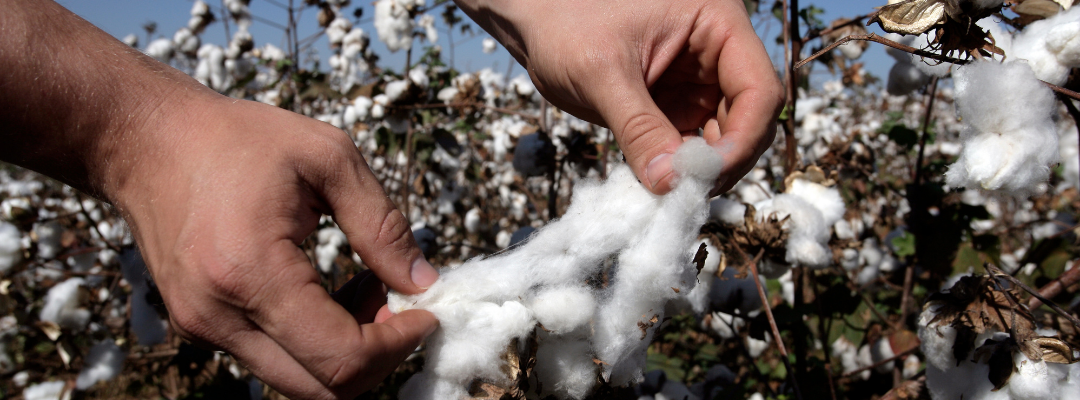A producer’s marketing plan is a contingency plan to sell a commodity in the context of price risk. Cotton prices have been in a long term up-trend, with considerable volatility in recent weeks (see the blue line in Figure 1). A typical marketing goal would be to sell commodities at relatively higher prices, or (conversely) protect un-sold commodities from down-side price risk.
One way to reduce the risk of lower prices is to forward cash contract portions of expected production. However, drought-elevated production risk in 2022, coupled with uncertain plantings, uncertain yield impacts from reduced fertilizer usage due to higher fertilizer prices, inverted futures markets, likely price volatility, and higher costs of financing have all likely led cotton merchants to limit their forward cash contract offerings.
Futures hedging by selling ICE cotton futures contracts is another approach to set a price floor, subject to basis risk. However, the possibility of higher trending futures has raised the actual and potential margin risk of futures hedging. In addition, futures hedging sacrifices any benefit of potentially selling at higher cash prices if the market continues to rise.
Put options are one way to lock-in high price levels without margin calls or sacrificing upside flexibility. A put option gives the buyer the right, but not the obligation, to sell cotton futures at a certain price. In Figure 1 below, Dec’22 cotton futures (the blue line) have trended higher since 2021. As of May 3, the Dec’22 futures settled at 126.18 cents per pound. While this has happened, the premium for put options on Dec’22, like the $1.20 put option graphed in red, have gotten cheaper over the long term. The $1.20 put option means that the buyer of this put option has the right to sell Dec’22 cotton futures at $1.20 per pound. Note that hedgers have flexibility in the price coverage level by being free to choose from different strike prices.
Put options at a given strike price cost less in a rising market because the put option gives the right to have sold Dec’22 futures at $1.20, which has intrinsic value only when the underlying futures price is below $1.20. Therefore, put option premiums move opposite to the direction of the underlying futures price. This is important because an increasing put option premium can act as an insurance payment against falling futures and falling cash prices (assuming a stable cash basis). The insurance analogy is important since nobody knows the direction of futures prices for certain. And unlike other forms of insurance, put options can be offset when they are no longer needed, e.g., when the crop is sold in the cash market, giving hedgers a chance to recover some of their initial expense in option premiums.
At 9.71 cents per pound (as of May 3), buying a $1.20 put option on Dec’22 ICE futures is essentially buying the right to a 110.29 cent short futures ($1.20-$0.0971) position, without the margin call exposure and without removing upside potential if markets continue to strengthen. Waiting to implement this strategy could be beneficial, i.e., more affordable, if ICE cotton futures continue to rise, which they might. So hedging portions of expected production with put options over the next several months might be a good way to dollar-cost-average decent hedged prices.
Figure 1. Dec’22 ICE Cotton Futures Settlement Price (in Blue) vs. Associated 120 cent Put Option Premium (in Red).

Daily
July 28, 2021 – May 3, 2022
Robinson, John. “Forward Pricing with Options on ICE Cotton Futures“. Southern Ag Today 2(22.1). May 23, 2022. Permalink

